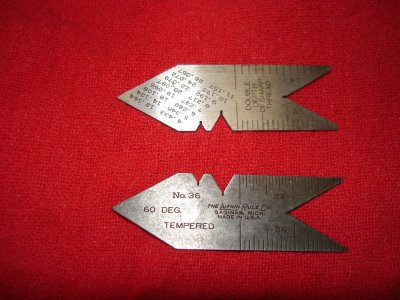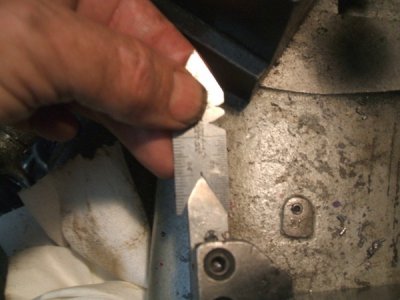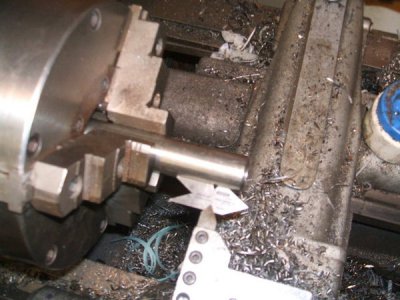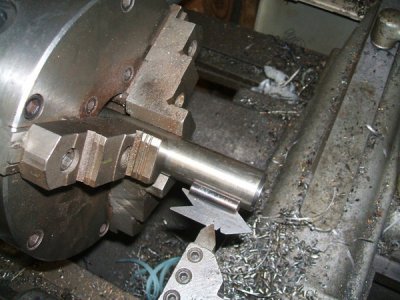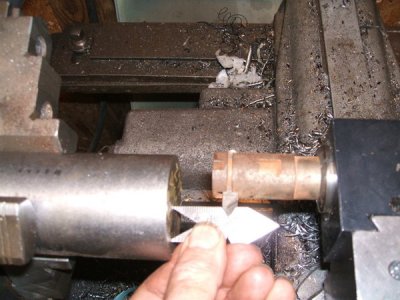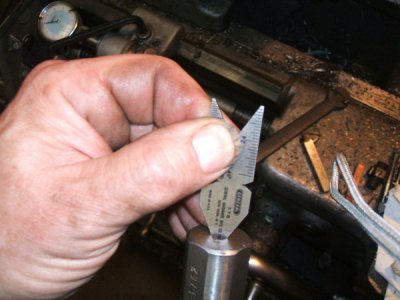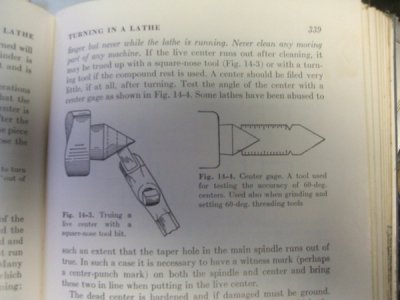- Joined
- Jul 7, 2012
- Messages
- 641
I'll start with a simple tool. The 60 degree thread set up tool thats referred to as the fish tail. I've used the tool to set up my lathe bit to cut threads. I have successfully cut threads on the lathe & have compared my cut threads to some " professional" cut threads & could not see any difference in the two sets of threads, however the "professional" could tell what the three different size female 60 degree vees are for, why it has one 60 degree male vee, what the number chart on the tool means & how to use the tool properly to get the most bennefit out of the tool......... With this being said let "fish tail 101" begin. Any teachers available to start the class session ?
Phil
So, can anyone give definitive answers to those few questions, of provide a link to an article or video?
M

